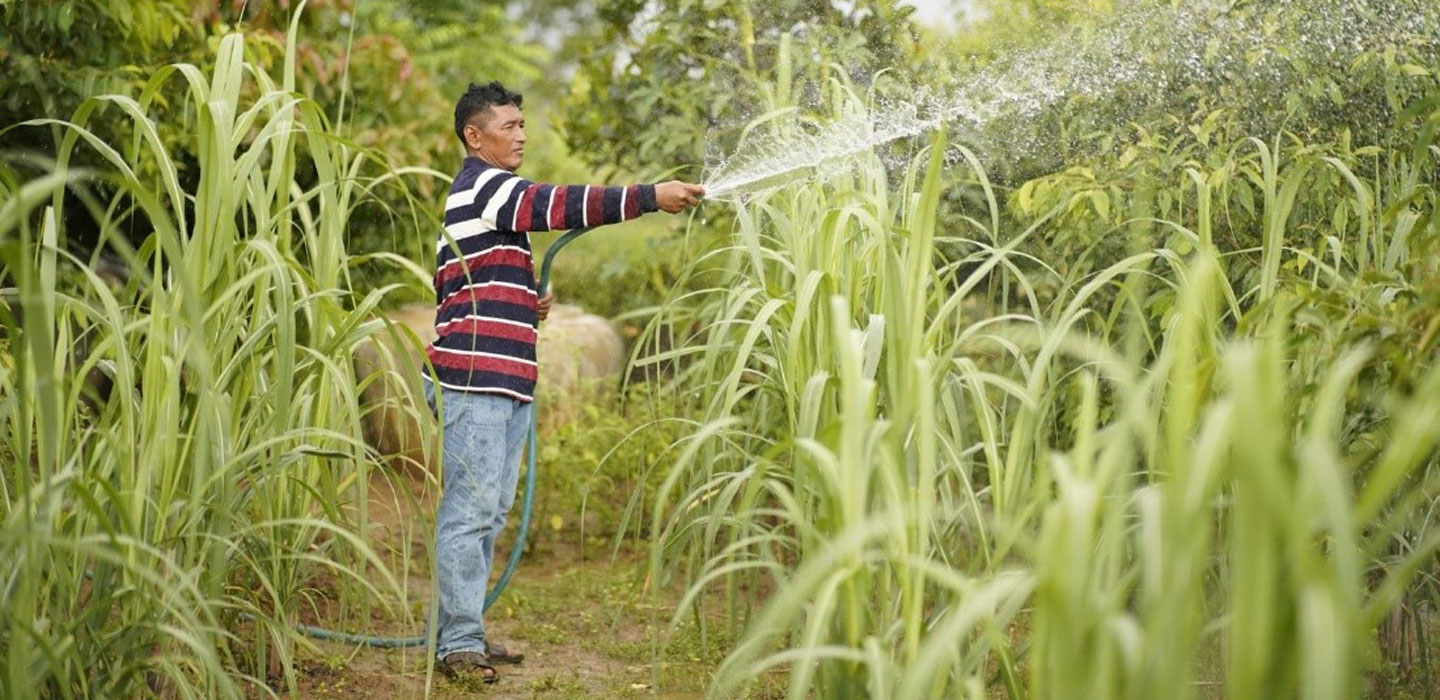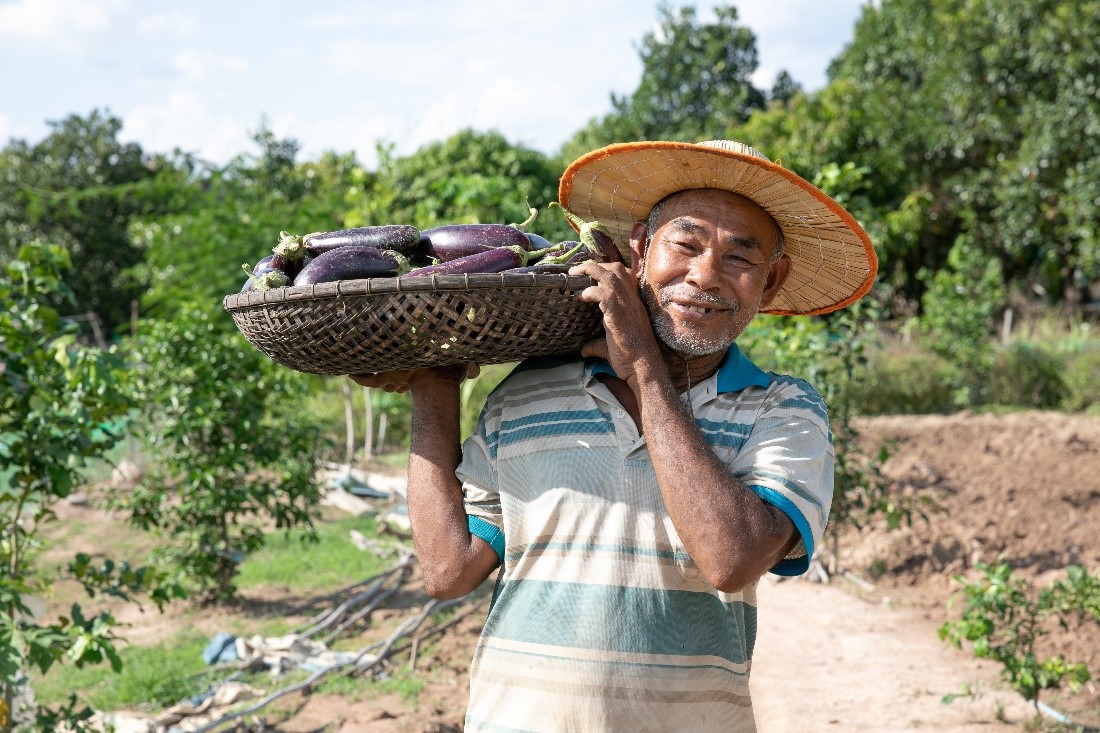Integrated farming strengthens climate resilience in Cambodia
IFAD Asset Request Portlet
Asset Publisher
Integrated farming strengthens climate resilience in Cambodia
Estimated reading time: 3 minutes
Across Southeast Asia, climate change-induced floods, droughts and an increase in pests have wreaked havoc on agriculture, food security and humans.
In Cambodia, where smallholders dominate agricultural production, a simple solution to these challenges is having a big impact: landscape-specific integrated farming.
What are integrated farming systems?
Integrated farming systems possess unique characteristics and are closely connected to the landscapes in which they operate. Through these systems, farmers can choose techniques as a package rather than for their individual benefits. By combining different components, such as crop rotation or homemade compost, they can provide ecosystem benefits and build climate resilience.
When designed properly and using the right techniques for local agro-ecological contexts and economic conditions, integrated farming can increase food production and incomes, while improving soil quality and reducing the need for chemical fertilizers and irrigation.
For example, with circular farming, livestock feed on the by-products of crops, and their excrement is used as rich natural compost that makes the soil more fertile to cultivate more crops – and the cycle continues.
Global resources for local solutions
In Cambodia IFAD worked with the World Overview of Conservation Approaches and Technologies (WOCAT) and the Ministry of Agriculture to introduce integrated farming.
The first step was to bring together global, national and local expertise. Using GIS mapping and drone imaging, the team consulted with local communities and classified farms into three agricultural landscapes: small homestead farms, homesteads with an attached rice field, and Chamkar, which are recently cleared upland areas with limited water sources.
Each has very different conditions and needs to become productive and climate resilient. The first two have relatively high access to water and labour but different farming systems; the third landscape tends to be far from water sources or households.
The team then draws on WOCAT’s global database of techniques as well as local practices to identify the best solutions and understand how they interact.
Meanwhile, farmers were trained and went on field visits to learn how integrated farming techniques can benefit them.
Local extension workers and farmers then drew out 1,500 farm plans to understand what each farm needed to increase its climate resilience and productivity.
They developed packages of integrated farming practices that support each other for the three landscapes and that were culturally acceptable and economically feasible for local farmers.
The right farming system for every context
 |
| An integrated farming system in Cambodia. © IFAD/ASPIRE |
Seven integrated farming models were drawn from the farm plans. Each model included agroforestry components with vegetables and trees to create favourable microclimates as well as produce diverse foods. In addition:
- The three homestead models have options for large or small livestock, or a small pond for fish and frogs. Each of these is part of a circular farming system, but the start-up costs vary, so farmers can choose the model that best fits their resources.
- The two models for homestead-with-rice-field landscapes also have the option of livestock or of cultivating fish in the paddy fields themselves.
- In chamkar landscapes, farms without access to irrigation can use water-efficient rainfed agriculture, while those with access to water sources can use small dams and produce irrigated commercial crops.
Collaborative design works
 |
| A farmer in Cambodia carrying a basket of aubergines. © FAO/Than Rathany |
The best integrated farming techniques are the ones that actually get used.
Farmers tend to use practices that address their main concerns: production and economic gain. As a result, several positive results have been achieved over a short period of time.
An assessment carried out in 2022 showed that the products provided had “very positive” socio-economic impacts. The ecological and health impacts also proved positive, with participants highlighting the micro-climate improvements to shade, windbreak, temperature and evaporation reduction, as well as in water quality.
The most effective way of increasing the use of integrated farming is by integrating the farmers themselves in the decision-making process, educating them on how it benefits them, and supporting them on production, nutrition and resilience, as well as the cost-benefits of a particular approach.
This collaboration with farmers means that the selected solutions are those that the farmers themselves consider valuable. This makes it more likely that they’ll keep using them, reaping the benefits for the earth and for themselves.
Read IFAD-supported research on successful ways of bringing sustainable land management techniques into integrated farming systems in Cambodia.
Publication date: 07 December 2023